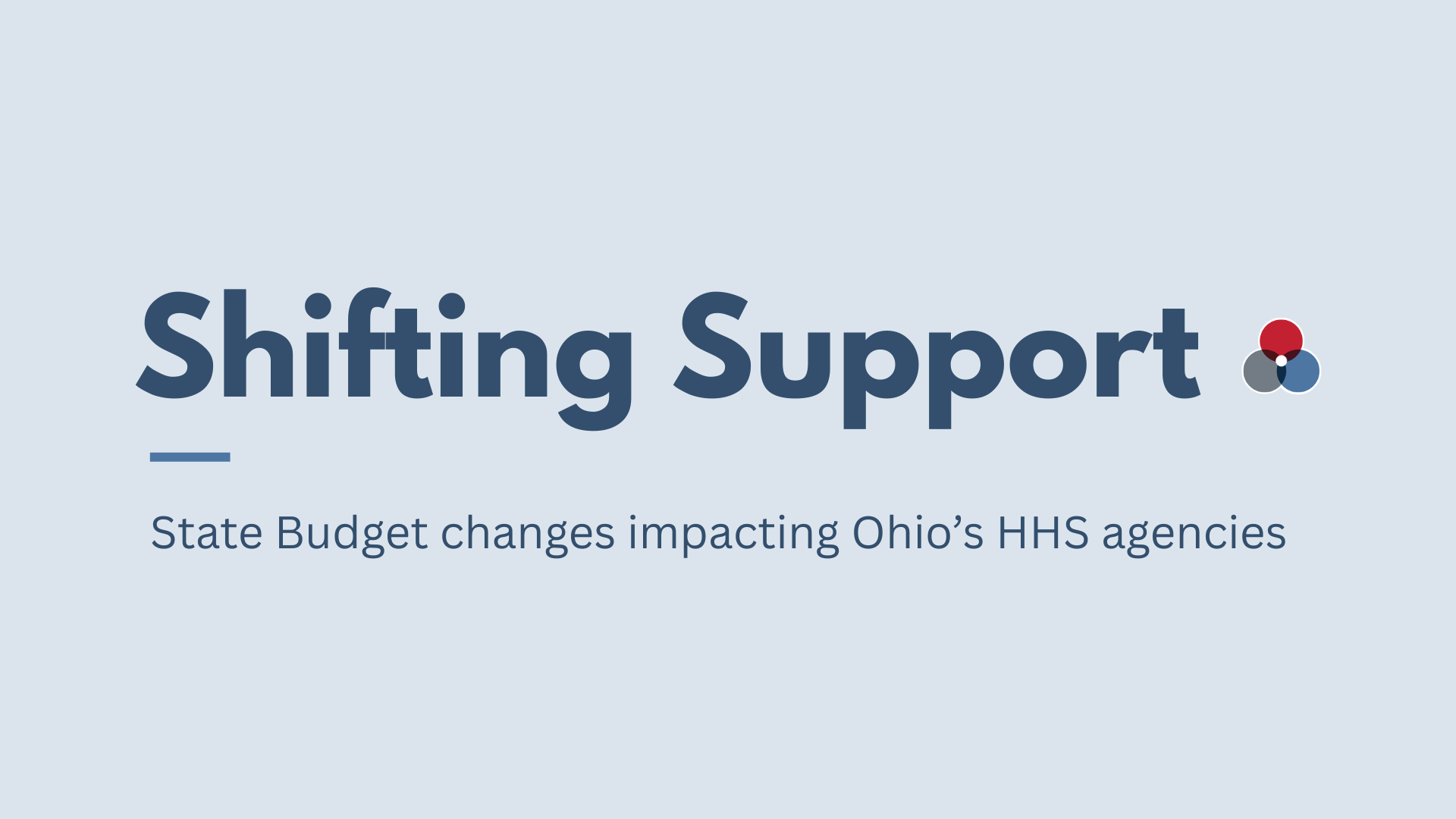By: Chloe Jen
Introduction
By law, children enrolled in Medicaid should receive comprehensive and preventive health care services. Early and Periodic Screening, Diagnostic and Testing (EPSDT) ensures that children and adolescents can receive appropriate services for dental, mental health, developmental and specialty services. States are required to provide EPSDT, along with Medicaid and Children’s Health Insurance Program (CHIP) services, to eligible populations. Among these services include lead screening and treatment, as more than four million children are still estimated to reside in housing where they are exposed to lead.1 The Centers for Medicare & Medicaid Services (CMS) has outlined actions states can take to increase blood lead screening rates.1 However, despite efforts, Ohio consistently underperforms in meeting lead screening rates.
More than four million children are still estimated to reside in housing where they are exposed to lead.
Importance of lead screening and testing
Lead is a toxin that is particularly dangerous to children. Since children still live in homes built before 1978, when lead-based paint was outlawed, children are still being exposed to lead from deteriorating lead-based paint and resulting dust and soil contamination.2 Exposure to lead is especially dangerous to children because their brains are in critical development stages, and this leads to adverse health effects, including damage to the brain and nervous system; slowed growth and development; learning and behavior problems; and hearing and speech problems. This ultimately also leads to lower IQs, a decreased ability to pay attention, and thus underperformance in school.3
TESTING FOR LEAD To check for elevated blood lead levels, a blood test is taken first through a finger prick, and then confirmed through a venous draw. Until 2010, a blood lead “level of concern” was identified as 10 or more micrograms per deciliter of lead in blood, but studies have shown there are neurodevelopmental effects with levels even below this. Thus, the Centers for Disease Control and Prevention (CDC) Blood Lead Reference value is currently five micrograms per deciliter, which is based on the highest 2.5 percent of children ages one to five years old when tested for lead in their blood.4
Studies show that the lead exposure risk from housing is especially high in Ohio and specifically in Cuyahoga County.
TESTING IN OHIO AND CUYAHOGA COUNTY Studies show that the lead exposure risk from housing is especially high in Ohio and specifically in Cuyahoga County, further illustrating the need for testing. Based on surveillance data, while the percentage of children in Ohio tested for elevated blood lead levels has increased, the number of children with confirmed elevated blood lead levels has decreased. This is shown in the table below.5

As of 2017, 12.9 percent of children just in Cleveland have blood lead levels greater than five micrograms, in comparison to the 8.4 percent of children in the Cuyahoga County and 2.8 percent of children in Ohio.6 These numbers emphasize the need for testing and screening in Ohio, and specifically in Cuyahoga County and in Cleveland.

These numbers emphasize the need for testing and screening in Ohio, and specifically in Cuyahoga County and in Cleveland.
IMPACT OF LEAD SCREENING As a result, lead screening is important so populations that are especially at-risk for being poisoned by lead can be served. These populations include children who are younger than seven-years-old, those who live at or below the federal poverty level, in older housing, or children who are of some racial and ethnic groups, such as non-Hispanic African-Americans. Since so many areas already have large amounts of lead, children are already exposed to the toxin. Testing and screening expose areas that pose a high-risk for lead poisoning in children. Identifying those locations can allow necessary abatement work to be done to prevent future poisonings, as well as provide help to children within those areas while they are still young, thus shortening the amount of time they are exposed.
The CMS has mandated in EPSDT that children enrolled in Medicaid receive two appropriate blood lead screening tests. Furthermore, the policy was expanded in 2012 to give detailed guidance for states to implement targeted lead screening programs. This also allows states’ limited resources to be used for children who most need screening. In 2016, CMS also issued a new bulletin that reviewed the quality of form submissions, consistency of coverage information online, promotion collaboration with state departments and organizations, partnerships with providers, and used partnerships with nontraditional providers. This broadened the scope of people that could be screened and assisted.7

Despite this, according to the Ohio Department of Medicaid’s Lead Testing and Hazard Control report, less than 60 percent of children covered by Medicaid have had blood tests reported to the state’s registry in recent years.8 Similarly, in a Case Western Reserve University study, despite Medicaid rules that mandate testing at ages one and two, only half of the children covered by Medicaid in Cuyahoga County were tested at age one and only 34 percent were tested at age two.9 These data points provide a general impression that these numbers are low overall, despite differences in where the data comes from. Thus, it is evident more efforts are necessary in order to have better lead testing and screening rates.
Less than 60 percent of children covered by Medicaid have had blood tests reported to the state’s registry in recent years.
Current programs to improve lead screening in Cuyahoga County
Specifically, in Cuyahoga County, there are a variety of programs in place. The Cuyahoga County Board of Health has a lead prevention program that consists of the following to encourage lead screening. This includes services such as blood lead testing, environmental assessments of homes, health care provider education, case management for children with elevated blood lead levels, free home repairs, the HEPA Vacuum Loaner Program, and listings of housing units that are both lead safe as well as those identified as hazardous properties.6 Cleveland’s Department of Public Health also has lead screening services.
Conflicts in meeting lead screening requirements
Even though Medicaid requires these tests and screenings to be completed, the data points reflect how testing rates are much lower than they should be. There is overall consensus that lower numbers may be due to families lacking a medical home with on-site screening, as well as problems with data collection and exchange.
One of the main issues arises from the under-testing specifically of high-risk kids.
LACKING A MEDICAL HOME & ON-SITE SCREENING One of the main issues arises from the under-testing specifically of high-risk kids. Since many providers’ offices don’t have on-site phlebotomy, families often need to go to multiple locations to obtain their blood tests, highlighting both transportation and timing issues. There is also an overwhelming number of services needed for children before they are 24-months-old. There are other things to cover in a visit, such as other developmental and nutritional checks, or all the vaccines children need in the first two years of life. There is also a hierarchy of care of services that require a blood draw, so lead tests are often deprioritized. In addition, without a medical home, families also don’t have reliable or strong relationships with providers, which leads to fewer timely medical services and a smaller likelihood of properly provided follow-up services. Many issues also arise through this lack of relationship building. As a result, families do not trust what they are hearing and are not taking their children to be tested at the rates they should be.
Not enough research has been done on how to close barriers to education or access to better resources.
PROBLEMS WITH DATA COLLECTION & EXCHANGE Issues in collecting data from patients and exchanging that information with providers and Managed Care Organizations contribute to the struggle in meeting testing standards. Because of long waiting time in receiving test results, providers often cannot follow-up with patients quickly and effectively. Since there is so much paperwork for families to fill out, managed care organizations only see about 20 to 25 percent of these forms return. As a result, a lot of time is spent on cases where parents can’t be contacted, which leads to many dead ends and services not provided to those families. While a lot of outside organizations have attempted to improve this data exchange, not enough research has been done on how to close barriers to education or access to better resources.
Target solutions to prioritize
Community Solutions conducted both literature review and a series of interviews with a member of the public health sector, a managed care provider, a physician, and a member of the Ohio chapter of the American Association of Pediatrics to devise solutions on how to increase lead screening numbers. The interviews consisted of questions including where the community stands in screening rates, things that can be improved, and additional resources that are necessary in order to make improvements.
IMPROVING TESTING PROCEDURES In terms of the blood draw procedure itself, by training more staff, medical practices can provide on-site draws and lab testing. Access to mobile units would also help limit the number of stops families need to make. Well-trained phlebotomists also make the blood draw experience less traumatic for children, which would allow them to properly obtain blood necessary for all tests. If results could be obtained faster and more accurately, this would eliminate some of the communications gaps between families and medical practices. Through building relationships with patients, there can be better information exchange as the trust increases between providers, patients and parents. This would then lead to an increased rate of successful follow-ups to connect families to further resources, data or counseling. If outside organizations are to assist, it would also be helpful to have them along for the entire medical process, allowing patients and parents to get to know their roles and goals.
Even without specific policy intervention, there are operational improvements that can be made.
OPERATIONAL IMPROVEMENTS Even without specific policy intervention, there are operational improvements that can be made, such as the Quality Improvement Project (QIP) of the Ohio Chapter of the American Association of Pediatrics (OAAP) which will launch this coming June.10 This project will provide additional research for physicians and families to make sure they receive what they need in order to ensure lead screenings are conducted. OAAP will collect data to see how well the new protocols in place work. The group will also see if interdisciplinary guidance is given to reduce lead exposure and what it potentially looks like. What makes this different from previous efforts implemented in Ohio is that this QIP specifically seeks to improve testing rates with primary care providers by following-up and providing resources for families and physicians. Currently the project does not plan to specifically reach out to managed care organizations (MCOs). As many incentives are offered to MCOs for participation or attaining specific rates of completion, reaching out directly to MCOs could increase the amount of and value of care and also lead to better data exchange.
Ohio requires all at-risk children to be tested.
Policy implications
SUPPORTING CURRENT PROGRAMS Ohio should first continue to fund and support current state programs. Currently, Ohio requires all at-risk children to be tested, but this should be expanded to include all children who are enrolled in the Special Supplemental Nutrition Program for Women, Infants, and Children (WIC) and CHIP. Specific CHIP funding for Health Service Initiatives (HSIs) should also be renewed in the next state budget, while continuing the lead-safe housing registry and environmental investigations for children who have confirmed elevated blood lead levels. This should be in conjunction with all county and city efforts, including maintaining and supporting the enforcement of the lead safe ordinance that was passed in Cleveland last year.11
ADDITIONAL POLICY OPPORTUNITIES BASED ON OUT-OF-STATE SUCCESSES States outside of Ohio have also implemented a variety of projects to improve testing and screening rates. This includes the implementation of Lead Screening Performance Improvement Projects (PIPs) and allow states to impose sanctions and penalties on Managed Care Organizations that fail to meet a lead screening goal. Other methods include things like using Health Service Initiatives, a state designed initiative that permits use of administrative funds from CHIP. HSIs give states the option under CHIP to develop programs to improve the health of low-income children, including lead exposure. Not only can states educate the public about the dangers of lead by providing case management, states can also use these funds to support lead abatement activities. Currently, while Ohio currently uses HSIs, this should also be expanded to provide more education opportunities and allocate more money to the Department of Health so public lead investigations can be completed after elevated blood lead levels are found. This would allow for more lead hazard control renovations as well.
Ohio should implement plans that were shown to be effective in other states.
Ohio should implement plans that were shown to be effective in other states. Plans such as starting contracts to require lead screening and documentation, or implementing different types of incentives and initiatives for participation; implementing sanctions if screening rates are below a certain percentage; or providing EPSDT incentives for primary care providers that meet or exceed compliance rates.
More focus on funding programs and implementing targeted legislation is necessary to further improve lead screening and testing rates.
Conclusion
Since lead has such a widespread and dangerous impact on the children of Ohio, much attention should be brought to the issue of lead screening and testing and lead abatement efforts. As a whole, Ohio has put significant effort in attempting to alleviate the detrimental effects of lead, but more focus on funding programs and implementing targeted legislation is necessary to further improve lead screening and testing rates. Together, these efforts can improve overall lead screening in Ohio, having a lifelong significance for children in the state.
Notes 1. “Early and Periodic Screening, Diagnostic, and Treatment.” Medicaid. Centers for Medicare & Medicaid Services. https://www.medicaid.gov/medicaid/benefits/early-and-periodic-screening-diagnostic-and-treatment/index.html.
2. “Biomonitoring Summary.” Centers for Disease Control and Prevention. U.S. Department of Health & Human Services, April 7, 2017. https://www.cdc.gov/biomonitoring/Lead%5FBiomonitoringSummary.html.
3. “Health Effects of Lead Exposure.” Centers for Disease Control and Prevention. U.S. Department of Health & Human Services, January 7, 2020. https://www.cdc.gov/nceh/lead/prevention/health-effects.htm.
4. “Blood Lead Levels in Children.” Centers for Disease Control and Prevention. U.S. Department of Health & Human Services, July 30, 2019. https://www.cdc.gov/nceh/lead/prevention/blood-lead-levels.htm.
5. “CDC - National Childhood Blood Lead Surveillance Data.” Centers for Disease Control and Prevention. Centers for Disease Control and Prevention, July 30, 2019. https://www.cdc.gov/nceh/lead/data/national.htm.
6. “Lead Poisoning Prevention.” CCBH. Cuyahoga County Board of Health, March 6, 2020. https://www.ccbh.net/lead-poisoning/.
7. “Lead Screening.” Medicaid. Accessed May 20, 2020. https://www.medicaid.gov/medicaid/benefits/early-and-periodic-screening-diagnostic-and-treatment/lead-screening/index.html.
8. “Ohio Department of Medicaid Lead Testing and Hazard Control Report.” Lead Testing and Hazard Control . Ohio Department of Medicaid, April 2, 2019. https://medicaid.ohio.gov/Portals/0/Resources/Budget/ODM-Lead-Testing-and-Hazard-Control.pdf.
9. “Studies: Elevated Blood Lead Level in Early Childhood Associated with Increased Risk of Academic Problems in School-Aged Children.” The Daily. Case Western Reserve University, January 10, 2019. https://thedaily.case.edu/studies-elevated-blood-lead-level-early-childhood-associated-increased-risk-academic-problems-school-aged-children/.
10. “Get the Facts on Lead Screening and Diagnosis.” Ohio American Association of Pediatrics, n.d. http://ohioaap.org/wp-content/uploads/2020/03/AAP%5FLeadFlyer%5FPrint.pdf.
11. “Ordinance No. 747- 2019.” Codified Ordinances of Cleveland, n.d. https://www.unitedwaycleveland.org/wp-content/uploads/2019/06/Cleveland-Lead-Prevention-Ordinance-747-2019-City-Council-Committee-Hearing.pdf.








